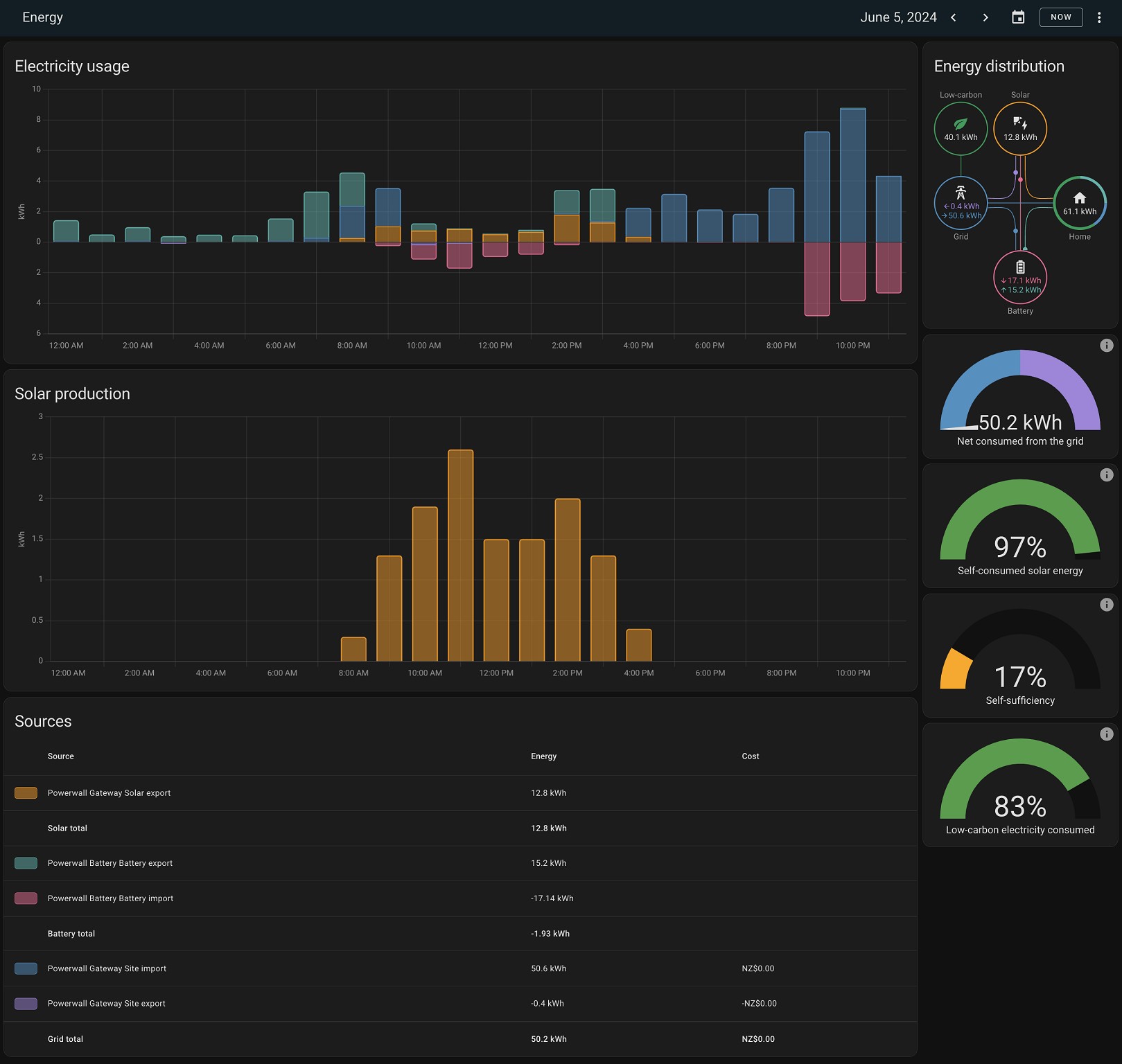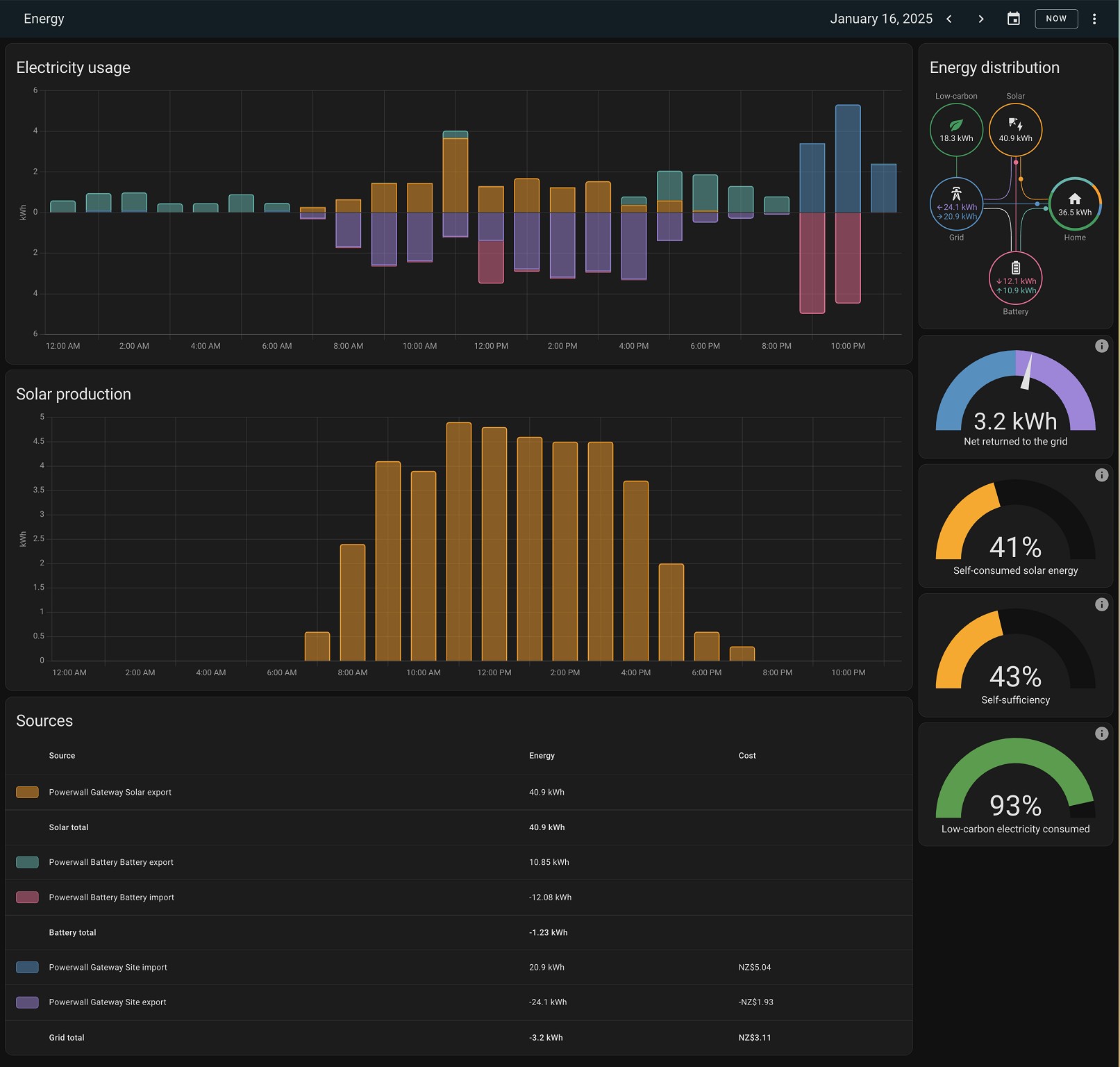LightbulbNeil:
On a really good day for Dec Jan , our 10kW east west will get to 10kW output. Our roof is shallow at 15deg. Nov 2024 to now has been alot more productive than Nov 2023 to end of January 2024. Its looking like about 8 to 10% more production. So it seems there are quite significant changes in the years for solar production. We based our system for the highest winter production. On average the 10kW east west is about 8 kW of peak production and about 6kW from 10 to 3 pm or so in Dec Jan. This season our peak daily production has been up to 112kWh a day or more are in the 107 a day range. A lot higher than last year.
How do you heat the house in winter at night?, does the Battery have enough saved energy to run the heating over night?. I can see the benefits for me in summer and the spa in winter days just struggling working out the pros and payback of batteries over winter. In lower North Island gets pretty cold where we are




